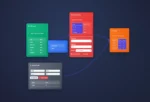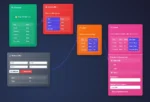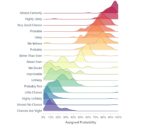
by tyler garrett | Jun 1, 2025 | Data Management
In today’s rapidly evolving digital landscape, organizations are often inundated with overwhelming volumes of unstructured content. Emails, documents, audio files, videos, and social media data can create clutter rather than clarity. To turn this tremendous data stream into meaningful insights, decision-makers must develop effective data taxonomies. A meticulously defined taxonomy not only streamlines data discovery but also serves as a robust foundation for sophisticated analytics and innovation. Whether you’re establishing automated data pipelines for audits, enhancing integration capabilities, or powering cutting-edge dashboards with advanced visualization techniques, a strategic approach to taxonomy development ensures consistent data-driven decisions. Let’s explore how you can master data taxonomy development, extracting strategic value from your vast troves of unstructured content.
Understanding The Importance of Data Taxonomy
Before delving into the nuts and bolts of data taxonomy, it is vital to understand why it matters. Unstructured content—reports, emails, multimedia, and social media feeds—presents extensive challenges due to variations in format and granularity. Without a systematic way to categorize such data, organizations find themselves stuck with fragmented insights, inefficient searches, and inaccurate analytics. An effective data taxonomy allows enterprises to organize and classify their vast data assets, creating valuable context and promoting consistency across knowledge domains. When properly implemented, data taxonomy directly influences multiple aspects of your analytics environment, from improved data integrity in dashboards to streamlined compliance and reporting.
For organizations adopting data-driven platforms such as Power BI consulting services, having an effective taxonomy framework is non-negotiable. A robust taxonomy serves as a backbone, allowing effective analysis and improved visualization capabilities like those used in sophisticated reporting and analytics platforms.
Taxonomy development also mitigates common pain points often experienced in unstructured data management. Without clearly defined data concepts and relationships, organizations risk data siloes, redundancy, and inefficient governance models. By unifying data definitions and categorization standards through taxonomy development, enterprises unlock clarity, enhancing collaboration, accessibility, and fostering data integrity throughout the organization.
Key Components of an Effective Data Taxonomy
Developing taxonomies for unstructured data is not merely about labeling and categories; it involves systematically mapping relationships and hierarchies across your organization’s knowledge domains. To begin, stakeholders must analyze existing data ecosystems, identifying critical concepts, terminology, attributes, and metadata that drive meaningful business insights.
A successful data taxonomy typically incorporates several foundational components, including clearly defined data categories, standardized metadata, taxonomic relationships, and hyponymy—it’s crucially important to preserve hierarchical relationships effectively. By doing so, organizations can facilitate flexible querying, rapid retrieval, and streamlined interpretation of ever-expanding data sets.
In achieving flexibility and accuracy, your taxonomy must align directly with enterprise architecture and business objectives. Instead of static borders, flexibility and dynamism in taxonomy ensure long-term adaptability. Consulting resources such as Dev3lop’s work on data integration pattern libraries can offer valuable guidance, particularly where data structure heterogeneity demands reusable integration solutions.
Moreover, taxonomy can enable sophisticated data processing workflows. For example, clear taxonomies simplify rule-based automation—critical for large-scale transformations and business logic implementations. Leveraging data taxonomies can help effective implementation of business rules engines in data transformations, enhancing consistency and repeatability throughout the data lifecycle.
Techniques and Methodologies for Taxonomy Development
Establishing clarity from unstructured data can seem daunting, but proven methodologies can streamline taxonomy development. Organizations generally adopt a hybrid approach combining top-down and bottom-up strategies. This involves starting from core business goals and domain knowledge (top-down), and simultaneously mining existing unstructured data to extract taxonomic insights based on patterns, usage, or common metadata attributes (bottom-up).
Machine learning and Natural Language Processing (NLP) prove especially valuable during this stage. NLP algorithms can identify entities, capture relevant metadata elements, and even auto-generate preliminary hierarchical structures from unstructured texts such as emails, Twitter feeds, and industry reports. Technological innovation empowers stakeholders to rapidly iterate taxonomies, ensuring completeness, consistency, and relevance.
An increasingly popular methodology known as faceted taxonomy development helps organizations build taxonomic frameworks through multiple relevant attributes. This allows powerful filtering and search capabilities, considerably enhancing your final user’s data discovery experience. Maintaining such dynamic taxonomies is notoriously difficult. It requires consistently monitoring data feedback loops through event sourcing for auditable data pipelines, thus ensuring accuracy and timely taxonomy refining.
Follow industry best practices by incorporating user feedback actively into the taxonomy-building process. Consulting an experienced technology partner ensures strategic alignment to user expectations, innovation strategies, and long-term maintenance feasibility.
Integrating Taxonomy Within an Enterprise Data Architecture
The development of your taxonomy is only half the journey; you must skillfully incorporate it throughout your enterprise data architecture. Integrating your taxonomy enables an adaptive application across data lakes, data warehouses, search engines, and analytics dashboard solutions. Crucial at this stage is seamless data integration and transformation—whether migrating historical data or adopting streamlined reporting solutions.
When executing complex data integration strategies, experts can employ robust backfill methodologies for historical data processing. Clearly defined taxonomies simplify automated reclassification and data auditing during such backfill processes, reducing risk and enhancing visibility.
Central to taxonomy integration is the use of metadata management tools and frameworks, complemented by robust business intelligence solutions like Power BI. When connecting taxonomy-driven data with visualization-focused platforms, your strategic differentiation often arises directly from your technology decisions. Leveraging advanced rendering technologies—including discussing differences between SVG, Canvas, and WebGL for Data Visualization—can significantly improve visualization quality, interactivity, and end-user engagement.
Ultimately, strategic integration results in a cohesive data architecture model. Decision-makers will witness unparalleled improvements in analytical accuracy, business intelligence responsiveness, compliance adherence, and innovative data-driven decision-making capacity across all organizational functions.
The Organizational Impact of Data Taxonomy Investments
Businesses need to carefully evaluate organizational impacts when investing in taxonomy development. Key improvements include greater effectiveness in analytics and business intelligence, enhanced regulatory compliance, more robust knowledge management, dramatically improved user experience, and efficient governance. A strategically formulated taxonomy empowers enterprises to capitalize fully on their unstructured content, placing key insights and information directly in the hands of knowledge workers at every organizational level.
Additionally, taxonomy investments cultivate an environment that supports future innovation and advanced analytics. For organizations keenly building their analytics teams, taxonomy development creates a learning ecosystem, strengthening your data engineering career and skills path. Emerging specialists now have clarity into business concepts, data structures, workflows, and relationships—which enables rapid team skills development and onboarding.
Furthermore, implementing strong taxonomy interlinks with initiatives such as auditable data pipelines and reusable integration templates. These patterns empower innovation while significantly reducing data redundancies, compliance risk, and governance complexity. Organizations adopting strategic data taxonomy decisions are far more likely to transform their extensive content liabilities into tangible strategic assets.
Investment in taxonomy development underlines organizational commitment to data excellence, driven decision-making, and robust innovation strategy. When executed properly, it’s no longer an administrative overhead but a true competitive advantage—essential for organizations seeking to thrive in data-driven markets.
Conclusion: Strategize Your Approach to Data Taxonomy
Thank you for your support, follow DEV3LOPCOM, LLC on LinkedIn and YouTube.

by tyler garrett | May 30, 2025 | Data Management
Imagine meticulously collecting terabytes of data only to discover significant organizational confusion surrounding what it all truly means. In today’s competitive landscape, where accurate decisions hinge on speedy data retrieval, understanding the information in front of us is paramount. User-driven data classification transforms chaotic information into intuitive, efficient, and actionable insights, championing a culture of clarity within your organization. As experienced technical strategists specialized in data insights and analytics, we’ve guided numerous enterprises through innovative solutions—such as advanced Tableau consulting services—to enable smarter, swifter, and better-informed business decisions. This article acts as an implementation roadmap, unveiling practical strategies to introduce user-driven data classification into your data stack confidently.
Understanding the Significance of User-Driven Data Classification
User-driven data classification is not merely a technical buzzword; it is a strategic initiative empowering your entire organization to leverage information effectively. Traditional data management approaches often leave data categorization solely to IT or analytics teams, lacking essential context and practical insights from those actually using the information daily. By prioritizing user-driven classification, you distribute that responsibility across your business units, helping you grasp the subtle contexts, nuances, and requirements unique to different departments and teams.
Take customer data, for example. Your sales team views customer information in terms of “prospects,” “qualified leads,” and “high-value customers.” However, the IT department traditionally classifies that same data by accessibility levels, security clearance, or the database’s structural integrity. User-driven data classification bridges this descriptive gap by summing up perspectives from across your enterprise, creating alignment amongst all functional teams. This clarity catalyzes better decision-making and expedites data analytics efforts, crucial in scenarios where budgets and resources might be limited—emphasized in our article “How to Prioritize Analytics Projects with Limited Budgets.”
Implementing effective data classification also enhances compliance efforts, ensuring data privacy and security regulations are intelligently enforced at the data level. Your users become active participants in adhering to governance, greatly increasing the overall data responsibility culture. This user-centric approach prevents misinterpretations, delays, or inaccuracies in analytics, ultimately propelling your business toward sustainable innovation and competitive advantage.
Key Steps to Implement User-Driven Data Classification
Define Clear Objectives and Scope
Before diving into actual implementation, clearly define what you intend to achieve through a user-driven data classification system. Begin by communicating overarching goals and concerns to stakeholders—from improved customer segmentation to comprehensive security and regulatory compliance. Clarifying these objectives upfront creates a unified vision and encourages users to embrace the classification initiative. Aim for straightforward, achievable goals that resonate, like boosting productivity, improving predictive modeling capabilities (as discussed in our case “From Gut Feelings to Predictive Models: a Client Journey“) or enhancing data-driven collaboration.
Determining the project scope is another crucial consideration. You cannot classify everything, particularly if data engineering tasks run into billions of daily events (highlighted in our “Data Engineering Case Study“). Prioritize domains or data sets where classification improvement offers tangible business benefits. Start with specific, critical areas to demonstrate value quickly, before rolling it out organization-wide. This tactical approach allows team members to familiarize themselves and witness concrete improvements before introducing the model more broadly.
Engage Your End User from Day One
User-driven implies precisely that—end users should help design, refine, and validate the proposed data classification system. Work closely with representatives from departments whose functional roles require regular interactions with data. By involving these users at every step, you’ll ensure classifications are practical rather than theoretical, reducing resistance later. Hosting workshops and feedback sessions ensures stakeholders comprehend the classification taxonomy, reducing friction and encouraging acceptance with minimal disruption.
We’re strong advocates for fostering transparency and open communication. Allowing space for end-user input facilitates critical thinking and empowers ownership, positively impacting the data classification project’s future success. Understanding real-world perspectives—such as unlocking insights from sales or marketing teams—can uncover nuances or gaps not readily visible to the analytical teams. This approach aligns perfectly with our extensive experience in facilitating collaborative data environments through our advanced Tableau consulting services.
Leveraging Appropriate Tools and Technologies
A key aspect of implementing successful user-driven classification lies in utilizing robust tools and technologies tailored to data management and analytics needs. Selecting the right technology requires careful consideration of frequency, scalability, and complexity. For example, databases can handle many classification tasks natively via SQL commands. Understanding queries like “Understanding the Difference Between UNION and UNION ALL in SQL” helps your team handle classification efficiently. Becoming adept in fundamental SQL commands significantly strengthens data classification capabilities.
Additionally, visualization and business intelligence platforms such as Tableau seamlessly integrate into your workflows, providing visual tools that directly aid user-driven classification. It enables users to interact, label, and classify data intuitively, reducing friction between technical specialists and non-technical users. Leveraging technology like Tableau promotes self-service analysis and helps data classification remain dynamic and aligned with evolving business contexts. Reach out to our trusted consultants to explore more about integrating these visual tools into your classification strategy—find more details on our advanced Tableau consulting services page.
Building Sustainable and Maintainable Data Classification Processes
Establishing Consistent Classifications and Governance Standards
User-driven classification thrives not just on user involvement but on consistency and centralized governance. Establishing clear guidelines that standardize how users categorize data ensures stability and sustainability over time. Introduce detailed standards and formatting conventions to reduce mismatches, ambiguities, and redundancies. Having documented governance rules gives your organization a resilient data structure, preventing future confusion as your business evolves.
Furthermore, disseminating these standards throughout your organization reduces risks associated with unintentional errors or ethical oversights. We explored the importance of responsible governance in our article “Ethical Considerations in Data Engineering and Analytics“. Ingraining ethically conscious classification frameworks helps protect your enterprise from compliance violations and fosters stakeholder trust in your analytics strategy.
Regular Updates and Adaptation
Classifications aren’t static; they constantly evolve. Conduct periodic reviews, re-assessments, and improvements to ensure classifications remain relevant and accurate. Data growth, changing analytics priorities, or shifts in market conditions necessitate regular updates to classification processes, ensuring sustainability and operational adaptability. Concepts from our “Recursive Data Processing for Hierarchical Structures” article may prove valuable here, as classification updates can require nuanced analysis, especially where data relationships are hierarchical or complex.
Measuring the Success of Your Data Classification Implementation
Finally, establishing clear performance indicators for success allows your business to track progress and reflect objectively on improvements. Choose metrics aligned with the goals set initially, such as increased speed in data retrieval, reduction of misclassified data entries, reduced analytics bottlenecks, and improved data-driven decision quality.
Evaluate user adoption rates and gather feedback regularly. Strong adoption significantly evidences successful implementation, reflecting an intuitive, user-friendly classification system. Also monitor security and compliance improvements, significant indicators validating classification effectiveness and enhancing organizational accountability around data. Measurements offer an opportunity to iteratively refine your process, ensuring continuous improvement toward achieving your strategic data objectives.
Conclusion: Empower Your Business with User-Driven Data Classification
Implementing user-driven data classification unlocks powerful benefits for modern enterprises, converting extensive, complicated datasets into actionable resources for decisions. Aligning your organization’s users, processes, and technologies creates a robust, adaptable, and sustainable data strategy perfectly attuned to evolving business needs and analytical innovation.
If you’re considering how to strategically navigate data classification and analytics maturity, don’t hesitate to engage experts. Our team at Dev3lop Consulting, a leading provider in data solutions, can guide your journey toward innovative, user-friendly, and effective data classification methods suited to your business objectives.
Thank you for your support, follow DEV3LOPCOM, LLC on LinkedIn and YouTube.

by tyler garrett | May 30, 2025 | Data Management
In today’s rapidly evolving technology landscape, outdated data strategies can spell doom for data-driven enterprises. Yet, even more insidious than outdated systems are obsolete data fields that silently threaten analytics accuracy and operational workflows. Deprecation, the thoughtful removal of outdated or unsupported data fields, is a signal of growth and maturity in your analytics lifecycle. However, without a well-crafted consumer notification strategy, an otherwise forward-moving data tactic can cause confusion and trust issues among stakeholders. This crucial intersection between innovation and communication is where strategic data leaders thrive. In this comprehensive guide, we’ll explore how understanding data field deprecation signals and proactive consumer notification practices can transform your organization’s data culture, maintain stakeholder trust, and uphold your analytical integrity.
Why Data Field Deprecation Matters for Data-Driven Success
Deprecation occurs when a data asset, attribute, or field reaches the end of its useful life within your organization’s data architecture. Outdated fields often originate from legacy systems or decommissioned third-party integrations and may create noise, confusion, and additional risks if not properly managed. Organizations might be tempted to ignore deprecated data because of the initial overhead attached to remediation. However, neglecting timely and explicit data field deprecation practices can create accumulated technical debt that grows rapidly, eventually leading to fragmented data infrastructures and incorrect analytics insights.
To manage these internal complexities more effectively, many organizations leverage expert services, such as comprehensive PostgreSQL Consulting Services, to streamline database maturity and seamlessly address data deprecation issues. From misaligned metrics that inflate business outcomes incorrectly to confusing end-users consuming dashboards or reports, unmanaged deprecated fields disrupt operational harmony and erode a team’s trust—not just in data, but in the entire decision-making framework.
However, a deliberate and transparent data field deprecation strategy signals organizational maturity and enables data-driven teams to maintain healthy analytics ecosystems. Actively managing these changes ensures stakeholders have accurate insights they can depend on, promoting continuous improvement and innovation across the enterprise.
Signs That It’s Time to Deprecate a Data Field
Data Field Utilization Declines Significantly
When usage of specific fields drastically declines, it could indicate a diminished business relevance, possibly driven by evolving requirements or shifting strategic priorities. Continually analyzing data usage statistics enables data teams to proactively retire outdated fields before they become sources of misinformation. Strategically employing Microservice Telemetry Aggregation Patterns empowers teams to monitor field usage effectively, offering crucial visibility into true data field relevancy.
System Evolution Leads to Schema Redesign
In data lake environments characterized by constant schema evolution, it’s increasingly common to see record attribute transformations. Incorporating advanced data methods, such as Polymorphic Schema Handling in Data Lake Environments, allows teams to redesign flexible and extensible data architectures. During migration and transformations, keeping obsolete fields may cause confusion and unnecessary overhead, prompting teams toward structured, deliberate field removals.
Shift Toward Real-Time Analytical Needs
The modern competitive landscape pushes companies to pivot from traditional batch processing toward more responsive, real-time solutions. As suggested by our earlier insights Batch is Comfortable but Stream is Coming for Your Job, real-time analytics, enabled through cloud-Native approaches and stream frameworks like Kafka, inherently change data requirements and often render legacy batch-native fields irrelevant—and ripe for deprecation.
Consumer Notification Strategy: Transparency Makes the Difference
Creating a Comprehensive Deprecation Timeline
Transparency is the cornerstone of successful data field deprecation. Clearly communicating your intent, along with comprehensive timelines detailing field retirement, supports user preparation, lessens confusion, and enhances trust. Ideally, your team should communicate significant schema adjustments well in advance (60-120 days notice), paired with preliminary notifications distributed strategically across data-consuming organizational channels such as internal analytics forums, wiki systems, and dedicated Slack channels. This approach ensures that stakeholders, developers, and analysts have ample time and resources to adapt pipelines, models, and dashboards proactively.
Furthermore, offering stakeholders effective substitutes or alternative methodologies—for instance, referring to resources on leveraging more agile open-source frameworks like Node.js in data warehousing as discussed here: Transitioning from Expensive Drag-and-Drop Data Warehousing to Open Source Node.js—can further reduce friction and operational risk.
Documentation: Ensuring Alignment and Clarity
Proper documentation during data field deprecation isn’t merely good software development practice—it’s essential for user trust. By outlining explicitly why a field has lost validity, providing an updated data modeling blueprint for data-driven success, and capturing all easy-to-understand context, data teams significantly reduce confusion. Detailed documentation coupled with clearly communicating alternative fields or schemas accelerates organizational acceptance and diminishes unnecessary concerns about data trustworthiness.
Moreover, comprehensive documentation expedites developer comprehension and adaptation through easily accessible resources, reducing the chance of inadvertently using deprecated data.
Implementing Technological Support for Deprecation & Notification Strategy
Automated Data Pipelines for Seamless Migration
Technical automation eases the transition away from deprecated data fields by automating changes throughout interconnected systems. Using modern patterns like Functional Programming Paradigms in Data Transformation Logic ensures concise, deterministic, and maintainable migration logic that reduces likelihood of human error, making transformation consistent across environments and reducing time spent handling discrepancies.
Modernizing your infrastructure through real-time data transfer integrations, as detailed in our guide on Building a Real-Time Dashboard with Streamlit and Kafka, not only addresses immediate needs but also streamlines future deprecation processes and migrations by clearly separating persistent schema dependencies.
Leveraging Analytics Platforms to Communicate Changes
Platforms like Tableau Server offer insightful comparisons between previous and updated analytics, enabling clear communication around these administrative decisions. Ensuring visibility into data field transitions through Tableau Server boosts transparency for non-technical stakeholders and provides assurance that data validation and governance remain strong during deprecation processes.
Ultimately, combining automation, insightful analytics platforms, and explicit scheme delineation ensures smooth, understandable transitions for data stakeholders and analysts alike.
Recognizing Deprecation as Opportunity for Innovation
Although often perceived as cumbersome, each data field deprecation signals a golden opportunity to refine and innovate your data landscape. Rather than viewing deprecation as strictly an administrative action, embrace it as evidence of organizational data maturity and readiness towards modern solutions.
Transforming this process from frustration to innovation propels organizational growth. Whether integrating open-source innovations, adopting microservice telemetry capabilities, or unlocking deeper analytics through advanced techniques like Market Basket Analysis, organizations can leverage these pivotal moments to accelerate clarity, build trusting relationships, enable innovation, and solidify long-term strategic advantages.
For more insights into improving your entire business intelligence and data strategy, consider exploring our publication on Dev3lop’s Revised Business Intelligence Offerings, showcasing the full spectrum of expertise available for your organization’s data-driven transformation.
In the relentless pursuit of innovation and optimized analytics, strategic deprecation management stands out as a differentiator that enhances transparency, reliability, and ultimately—the competitive edge of your data-driven enterprise.
Thank you for your support, follow DEV3LOPCOM, LLC on LinkedIn and YouTube.

by tyler garrett | May 30, 2025 | Data Management
In an increasingly data-driven world, controlling the distribution, access, and usage rights of valuable datasets becomes paramount. Digital Rights Management (DRM) isn’t only fundamental for films and music; modern businesses increasingly apply DRM strategies to dataset distribution, safeguarding intellectual property, ensuring compliance, and unlocking new business models. As decision-makers in various industries, understanding how DRM integrates seamlessly with dataset distribution strategies can significantly enhance your competitive edge. In this article, we’ll explore how robust DRM protocols can enable organizations to secure high-value data, leverage analytics insights effectively, and foster cutting-edge digital innovation.
Understanding Digital Rights Management for Data
At its core, Digital Rights Management refers to the technological and procedural system designed to control the usage, distribution, and ownership rights of digital content. Traditionally associated with entertainment, DRM has rapidly evolved to encompass datasets critical to strategic business decisions. As leveraging analytics to uncover hidden opportunities becomes the norm, organizations need specialized DRM systems capable of managing permissions, authorship, duplicate prevention, and detailed usage analytics. Dataset DRM not only restricts unauthorized redistribution but also ensures compliance with legal and regulatory requirements.
For businesses monetizing proprietary datasets, an effective DRM implementation allows controlled distribution, tracks usage patterns, and establishes enforceable user agreements. In turn, corporations gain a reliable method to deliver datasets securely to trusted entities, customers, or partners, mitigating cybersecurity risks. Embedding DRM effectively safeguards intellectual property, discourages piracy, prevents unauthorized usage, and encourages responsible data consumption.
Moreover, when properly integrated with analytics capabilities, DRM fosters transparency regarding dataset usage. This visibility enables data providers to understand user interaction with their datasets, enhancing dataset quality, enabling targeted improvements, and increasing customer satisfaction.
Why is DRM Necessary in Dataset Distribution?
As datasets become increasingly valuable assets in industries ranging from technology and retail to healthcare and entertainment, the repercussions of unprotected data distribution can be severe. Inadequate protection mechanisms expose sensitive, proprietary, or highly-valued datasets to unauthorized access, misuse, and redistribution. Implementing DRM not only protects datasets from piracy or leakage but also ensures organizations adhere to data compliance and regulatory guidelines.
From an analytics perspective, tracking dataset consumption and ensuring correct attribution to creators becomes critical. DRM provides mechanisms to foster trust between organizations and customers who see immense value in leveraging proprietary insights without breaching contractual obligations or unintentionally overstepping legal boundaries. As highlighted in our exploration of Austin’s booming tech-driven analytics industry, accurate data governance shaped by strong DRM practices significantly strengthens stakeholder confidence.
Furthermore, DRM solutions enable granular-level dataset access control, critical when handling sensitive or confidential datasets, to reduce the risk of data breaches or financial liabilities. Also, explicit dataset rights attribution can encourage collaboration between stakeholders, creating transparent collaborative environments that foster innovation.
Technologies Powering Dataset DRM
Modern DRM technologies for dataset distribution are sophisticated, driven by advanced solutions capable of verifying user identities, managing permissions, and tracking dataset usage at granular levels. Blockchain technology has emerged as one prominent approach, registering and verifying dataset ownership, usage permissions, and transaction logs in transparent, immutable digital ledgers. The technology offers scalable, cost-effective, and secure digital record keeping, complementing DRM strategies with increased transparency and reliability.
Another powerful tool for resilient DRM strategies is RESTful APIs and specialized service nodes deployed using frameworks such as Node.js. These platforms can manage authentication, authorization, and permissions flexibly and efficiently. Our specialized team of Node.js consultants helps companies deploy scalable, secure DRM infrastructures leveraging Node.js, offering seamless interactions, real-time tracking, and integration potential across distributed applications and microservices.
Encryption remains a crucial DRM element, with sophisticated cryptographic methods ensuring only authorized parties can access sensitive datasets. End-to-end encryption ensures protection during dataset distribution across networks, cloud solutions, or multi-tenant environments, reducing interceptability risks significantly. Additionally, as outlined in our guide about multi-tenant resource allocation, robust DRM integration provides effective permissions management across shared computing resources.
Industries Leveraging DRM in Dataset Distribution
The value of DRM in protecting and monetizing datasets spans various industries and use cases. For example, media and entertainment companies leverage DRM extensively to secure digital content, protecting revenue streams and intellectual property assets. Similarly, technology, finance, and healthcare industries adopt DRM solutions to control data access, protect client information, and meet stringent regulatory standards.
In Austin’s vibrant music scene, innovative organizations have begun incorporating advanced DRM measures along with analytics-driven audience engagement techniques. Learn more about this trend in our detailed exploration: Austin’s music scene leveraging analytics. Indeed, DRM-powered analytics empowers these businesses to manage user permissions intuitively, safeguard proprietary audience datasets like listener preferences and fan engagement metrics, and generate targeted analytical insights confidently.
Municipalities and environmental stakeholders also benefit from DRM solutions. For instance, our discussion on improving urban sustainability with data analytics demonstrates the need for precise DRM functionalities. Sharing sensitive urban planning datasets responsibly maximizes cooperation among multiple city development agencies and private stakeholders—all within strict security and confidentiality parameters.
Integrating DRM Strategies for Effective Dataset Distribution
Integrating an effective DRM solution starts with strategic needs analysis, understanding dataset attributes, intended use cases, and stakeholder access requirements. Organizations benefit from clearly defining policies around intended permissions, roles, and use scenarios. It is important to partner with an experienced consulting team capable of embedding DRM workflows into holistic digital strategies.
Technology selection is crucial. Experienced data consultancy firms help decision-makers choose appropriate DRM technologies aligned to business objectives and dataset types. Advanced APIs, cloud-native platforms, encryption methods, and blockchain solutions each have their unique strengths and best-fit scenarios, with well-managed approaches significantly simplifying complexity while retaining robust protection. Our team’s expertise covers various digital ecosystem components, from database structures to advanced visualization solutions such as glyph-based multivariate visualization techniques, ensuring your DRM technology integrates seamlessly within broader analytical workflows.
Finally, continuous monitoring, auditing, and adjustment are crucial to successful DRM implementation. Analyzing dataset consumption trends, security incidents, and permissions usage helps refine DRM policies continually and maintains heightened protection. Modern DRM systems utilize technologies such as Node.js-based data pipelines to stream and store analytics. This process supports proactive security management: detecting unauthorized access or suspicious behavior, generating alerts, and responding with corrective protocols rapidly.
The Future of DRM and Dataset Distribution
Looking forward, DRM continues to evolve rapidly, driven by emerging technologies such as distributed ledger blockchain implementations, quantum cryptography, machine learning-driven permissions monitoring systems, and decentralized data marketplaces. Organizations must continuously innovate, leveraging cutting-edge technology stacks—as discussed in our article exploring data lake versus data warehouse solutions—to integrate flexible DRM controls within enterprise-grade analytics. Doing so enables rapid, secure dataset transactions across global value chains.
Businesses prepared to adopt forward-thinking DRM measures benefit from substantial competitive advantages, increased security, reduced liability risk, expanded operational control of data across complex networks, compliance preparedness, improved stakeholder satisfaction, and significant opportunities for monetization. Partnering with strategy-focused technology providers familiar with the intricacies of dataset rights management positions organizations favorably toward sustainable and secure growth.
Ultimately, robust DRM protocols represent more than barriers or restrictions; when thoughtfully implemented, well-managed digital rights management lays the foundation for next-generation data sharing and digital innovation.
Thank you for your support, follow DEV3LOPCOM, LLC on LinkedIn and YouTube.

by tyler garrett | May 29, 2025 | Data Management
Imagine steering a ship without a reliable compass or map—chaos quickly ensues, and decisions become guesses. A similar scenario unfolds daily across countless organizations striving to make effective, data-driven decisions but lacking a clearly defined single source of truth (SSOT). Implementing an SSOT is about building your organizational compass, a foundation of consistency and clarity empowering stakeholders at every level. At our consulting firm focused on data, analytics, and innovation, we’ve repeatedly witnessed the transformational benefits organizations realize once they align around a well-defined SSOT. Let’s dive deep into the essentials, benefits, best practices, and how you can successfully bring a unified data perspective into your operations.
Understanding the Single Source of Truth (SSOT) Concept
A Single Source of Truth refers to the practice of structuring your data management strategy around a centralized, authoritative location for collecting, maintaining, and analyzing all essential data about critical entities. It symbolizes reliability, consistency, and transparency—three crucial ingredients for sound analytics and intelligent decision-making. Establishing an SSOT isn’t just another IT project; it represents a strategic shift towards data-driven excellence and organizational maturity. Without an SSOT, business leaders often struggle with fragmented, duplicated, or conflicting data streams leading to confusion and costly mistakes. Organizations may rely heavily on distinct analytics platforms or fragmented databases, believing it’s necessary for specific uses. However, adopting an data-driven business approach grounded in one unified data source breaks through these limitations, enhancing accuracy, security, and agility at all levels.
An SSOT can integrate data from disparate sources such as CRM platforms, ERP systems, operational databases, and external APIs, consolidating them into a unified view. Under this centralized model, unnecessary duplication and miscommunication diminish significantly. Employees across your organization won’t waste precious time debating the validity of disparate reports or questioning data accuracy. Instead, they’ll confidently access standardized, authoritative data without ambiguity, guiding smarter business strategies and faster decision-making.
The Business Value of Implementing a Single Source of Truth
The business benefits of an SSOT implementation extend far beyond improved efficiency into broader strategic impacts. One significant advantage is enhanced decision accuracy. By eliminating data inconsistencies and discrepancies, decision-makers have immediate clarity into performance metrics, customer insights, and overall business health. As your organization aligns around sharper, more accurate data insights, you’ll see operational efficiencies increase and confidence in data-informed decisions rise dramatically.
Another critical advantage lies in optimized operational agility. Leveraging a centralized approach accelerates response times to market changes and new opportunities; the ability to quickly access reliable intelligence empowers strategic pivots with minimal friction. Additionally, SSOT implementations simplify regulatory compliance as data governance becomes clearer and data lineage transparent—particularly critical for organizations in highly regulated sectors where data scrutiny and audits occur frequently. Non-profits, for instance, have found strong value in adopting data-driven structures as outlined in our article Business Intelligence for Non-Profits, gaining better donor intelligence, operational efficiency, and compliance capabilities.
User productivity and collaboration are significantly enhanced
An often-overlooked benefit of the Single Source of Truth is its direct effect on employee productivity and collaboration. Your staff spends considerably less time dealing with conflicting data sets or cleaning disorganized information when data queries are straightforward and accurate. Reduced frustration over unreliable data helps foster collaboration, empowering entire departments to collectively focus on strategic innovation and creative problem-solving. With everyone on the same page, teamwork grows naturally, driving faster, more aligned outcomes across the entire enterprise ecosystem.
Technical Best Practices for Establishing Your Single Source of Truth
Implementing an SSOT requires careful planning, meticulous execution, and the right supporting infrastructure. The first technical step is determining data sources relevant to your critical entities. A thorough inventory of data assets helps prioritize integrations, ensuring comprehensive coverage. This initial consolidation typically leverages databases such as MySQL, PostgreSQL, or cloud-hosted data warehouses, precisely configured and structured for analytical accuracy. Our team has deep expertise with enterprise-grade databases; explore our MySQL consulting services to gain clarity in creating clean, performant, and scalable database designs aligned with SSOT standards.
A clearly defined data governance framework is essential. This governance includes rules, policies, and stakeholder responsibilities clarifying how data is classified, who has access, how updates occur, and—importantly—maintaining data quality. Additionally, adopting an iterative, agile approach in implementation fosters organizational buy-in and allows incremental validation and refinement. Complement this approach with configuration-driven architecture principles instead of rigidly hardcoded logic. We outline this strategic difference in our publication about configuration-driven pipeline design vs hard-coded logic, emphasizing enhanced flexibility, adaptability, and maintainability.
Employ advanced modeling and visualization strategies
Selecting appropriate modeling patterns plays a vital role in building effective analytics from your Single Source of Truth dataset. Utilizing sophisticated frameworks like composite pattern visualization provides meaningful insights into complex, multi-dimensional analytics tasks. You can explore this method in detail through our piece on composite pattern visualization for multi-metric analysis. These advanced modeling strategies ensure decision-makers quickly grasp comprehensive insights and recognize trends across various interrelated entities and metrics.
Addressing Common Challenges in SSOT Adoption
Like any significant transformation, getting stakeholders to embrace an SSOT implementation isn’t without challenges. Data silos represent a major obstacle, where organizational units have built isolated datasets disconnected from broader contexts, often maintained by legacy processes or redundant infrastructures. Overcoming silos demands focused leadership, clear communication of strategic benefits, and digital transformation best practices.
Additionally, legacy system integration and dataset cleanup often proves challenging. Organizations may shy away from SSOT due to fear of technology debt or complexity encountered during integration phases. Addressing technical debt effectively requires technical experts deeply familiar with database systems and data pipelines. Take guidance from our insights on database reliability and scalability, emphasizing effective collaboration and strategic platform selection to overcome legacy integration hurdles.
Foster internal capability building and strategic skill acquisition
A successful SSOT implementation requires upskilling internal teams to leverage the new infrastructure effectively. Skill sets in SQL and related data-focused competencies become more valuable as organizations shift away from single-purpose vendor tools. We expand further on this in our popular article You Don’t Need Tableau, You Need to Learn SQL, which emphasizes empowering teams with data literacy for lasting organizational autonomy and agility.
Final Thoughts: Making Single Source of Truth Your Organizational Norm
As your organization evolves, its requirements for clarity, trust, and rapid decision-making courageously expand. Implementing an SSOT isn’t a luxury; it’s becoming a critical strategic imperative for remaining competitive, agile, and compliant. Consider that the road to consistent, dependable analytics doesn’t end at technology implementation; it requires cultural acceptance, strategic alignment, continuous data quality vigilance, and a growth-oriented stance towards learning new data skills. By placing your critical entities’ data management and analytics into a deliberate Single Source of Truth strategy, you’re laying the foundations for sustainable growth and data-driven clarity that will serve your business well into the digital future.
Are you ready to embark on your organization’s Single Source of Truth journey? You’re taking a significant step towards data clarity, business intelligence excellence, and operational agility, transforming the way your company leverages data for strategic advantage and sustained innovation.
Thank you for your support, follow DEV3LOPCOM, LLC on LinkedIn and YouTube.























